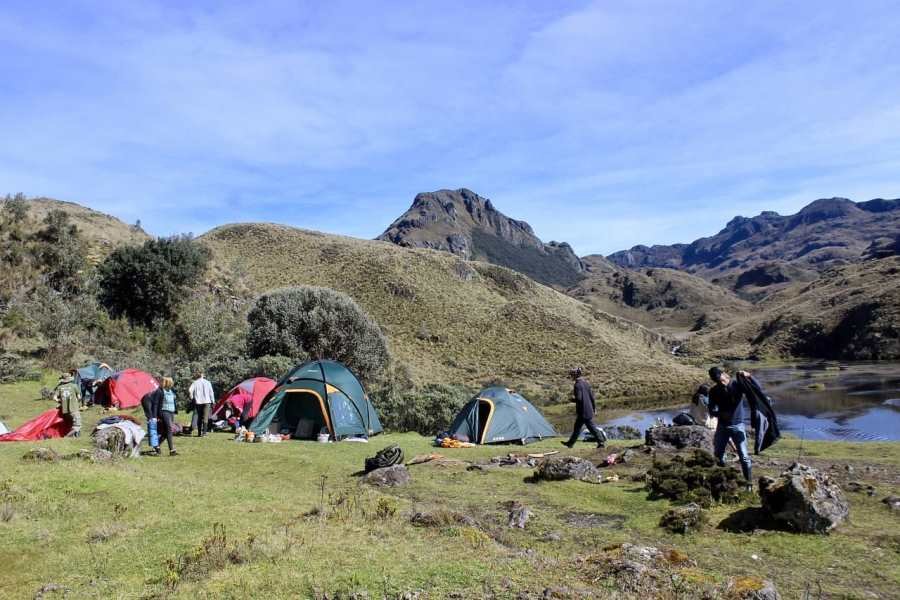A practical, field-tested guide to choosing and using portable solar panels—whether you’re off-grid at a campsite or slashing the electricity bill at home. Learn sizing, setup, and how to estimate your payback.
- Camping: 100–220W foldable panels + a portable power station are ideal for lights, phones, laptops, camera gear, and mini-fridges.
- Home AC: Running a full-size AC needs a higher-capacity array, inverter, and batteries; start with a hybrid approach (offset part of daytime load).
- Quick planning: Use watts, hours/day, and sun-hours to right-size your kit. For a precise estimate of panels & payback for air conditioners, try the Solar Panel ROI Calculator for AC.
Why Portable Solar Panels?
Portable solar panels combine freedom and frugality. They cut fuel dependence at camp, provide silent power during outages, and reduce carbon footprint at home. Modern panels are lighter, more efficient, and pair seamlessly with power stations and inverters.
- Sustainable: Clean, renewable energy anywhere.
- Cost control: Offset tariff hikes by generating daytime power.
- Resilience: Keep essentials on during grid failures.
- Scalable: Start small, expand as needs grow.
Portable Solar 101: How the System Fits Together
A portable system is typically:
- Panel(s): Monocrystalline (highest efficiency) or polycrystalline modules convert sunlight to DC power.
- Charge controller: MPPT is preferred for better harvest; regulates charging to the battery/power station.
- Battery: Lithium (LiFePO4) or NMC packs store energy for night or shade.
- Inverter: Converts DC to AC for home appliances—mandatory for ACs and many household devices.

Choosing the Right Portable Panel
Match the panel to your use-case:
| Panel Type | Typical Wattage | Best For | Pros | Considerations |
|---|---|---|---|---|
| Foldable soft-case | 60–220W | Camping, overlanding | Lightweight, packs small | Needs careful handling; angle matters |
| Bifacial foldable | 200–220W | Camping + home top-ups | Rear-side gains (reflective ground) | Heavier; benefits vary by setup |
| Rigid briefcase | 100–200W | Semi-permanent yard/balcony | Durable, stable performance | Bulky to carry far |
Top Portable Picks for Camping
100W Class: Ultralight Trips
Perfect for phones, headlamps, camera batteries, tablets, and a laptop. Pair with a 300–500Wh power station.
200W Class: Multi-Day Basecamps
Better for 12V fridges, drone batteries, and multiple devices. Pair with a 700–1200Wh station for cloudy-day buffer.
220W Bifacial: Fast Recharging
Rear-surface harvesting boosts output on reflective ground (snow/sand). Great when you need to replenish a larger battery by midday.
Pro tip: Use a tilt stand and reposition every 1–2 hours. The angle to the sun can change yield by 20–35%.
Portable Solar for Home AC Loads
Running a full-size AC on solar is absolutely possible—but it’s not “plug-and-play” like charging a phone. You’ll need enough panel capacity, a robust inverter, and appropriately sized batteries. Consider a hybrid approach: power part of the AC’s daytime usage with solar and fall back to the grid at night.
What You’ll Need
- Panels: Multiple 350–450W modules or several portable 200–220W panels.
- MPPT Controller: Sized for array voltage/current.
- Battery Bank: Sufficient Wh to cover peak hours or cloudy spells.
- Pure Sine Inverter: Surge-friendly and rated above AC’s starting load.
Unsure where to start? Get a tailored estimate of panel count, savings, and payback with our Solar Panel ROI Calculator for AC.
Right-Sizing: Simple Math That Works
Use this three-step approach:
- Estimate daily energy need:
Device Watts × Hours per day = Wh/day - Account for system losses: Divide by ~0.8 (inverter, controller, wiring).
- Panels needed: Divide by effective daily sun hours (4–6 typical) and panel watt rating.
Example A: Camping Load
Phone (15W×2h) + Laptop (60W×3h) + Light (10W×5h) + Mini-fridge (45W×8h at 30% duty): ≈ 630Wh/day. Loss-adjusted: 788Wh. With 5 sun-hours, you need ~160W of panels → a 200W foldable gives buffer.
Example B: 1.5-Ton Inverter AC (Home)
Approx running draw can average ~900–1200W under steady conditions. For 6h/day at 1000W: 6,000Wh. Loss-adjusted: 7,500Wh. With 5 sun-hours, you’d target ~1,500W of panels. That could be 4×400W rigid modules or ~7–8×200W portable panels.
What Can a Panel Power? Quick Reference
| Device | Typical Watts | Daily Hours | Daily Energy (Wh) | Panel Suggestion |
|---|---|---|---|---|
| Smartphone | 10–15 | 2 | 20–30 | 60–100W |
| Laptop | 45–65 | 3 | 135–195 | 100–160W |
| 12V Fridge | 40–60 (avg) | 8 | 320–480 | 160–220W |
| 1.5-Ton Inverter AC | 900–1200 (avg) | 6 | 5,400–7,200 | 1.2–1.8kW array |
Visuals to Include (Add as Images/Blocks in WordPress)
- Infographic: “Solar Sizing in 3 Steps.”
- Chart: “Panel Wattage vs. Daily Wh Harvest (by sun hours).”
- Diagram: “Camping kit wiring: panel → MPPT → battery → inverter → loads.”
- Table: “AC Tonnage vs Recommended PV Array for 4/5/6 sun-hours.”
Efficiency Tips That Multiply Your Harvest
- Tilt & track: Re-aim panels toward the sun every 1–2 hours.
- Keep it cool: Panel temps reduce voltage; allow airflow under panels.
- Clean glass: Dust can shave 5–15% off output—wipe often.
- Use DC where possible: DC fridges and lights bypass inverter losses.
- Stagger loads: Charge batteries midday, run heavier loads when generation peaks.
Safety & Care
- Use properly rated cables and fuses; avoid undersized wires.
- Protect connectors from moisture; lock MC4 clips fully.
- Anchor panels in wind; use guy-lines for soft ground.
- Follow manufacturer specs for series/parallel limits.
Estimating Savings & Payback at Home
Your payback depends on local tariffs, sun-hours, panel cost, and how much of your AC usage occurs during solar-yield hours. A hybrid system that shaves the daytime load can dramatically reduce monthly bills even before you go “full solar.”
Run the numbers for your city and usage pattern with the Solar Panel ROI Calculator for AC. You’ll see an estimate of panels required, monthly savings, and expected payback period.
FAQs
Can a portable panel run a full-size AC directly?
No. You’ll need an inverter and sufficient battery capacity to handle surges and continuous draw. How many panels to run a 1.5-ton inverter AC?
Often 1.2–1.8kW of PV for 5 sun-hours and ~6 hours of daily cooling. Use the calculator linked above for precision. Are bifacial panels worth it?
They can add notable rear-side gains on reflective ground (e.g., sand, snow, white rooftops). Yields vary. What’s better for camping: one 200W or two 100W panels?
Two 100W units offer placement flexibility and redundancy; a single 200W is simpler to wire and carry.
Conclusion: Start Small, Scale Smart
For camping, a 100–220W foldable panel + mid-size power station covers most essentials. For homes, begin with a daytime offset system and size up after validating your usage. Either way, portable solar delivers quiet power and long-term savings.
Plan your AC-focused setup and payback with the Solar Panel ROI Calculator for AC.




